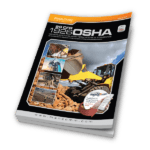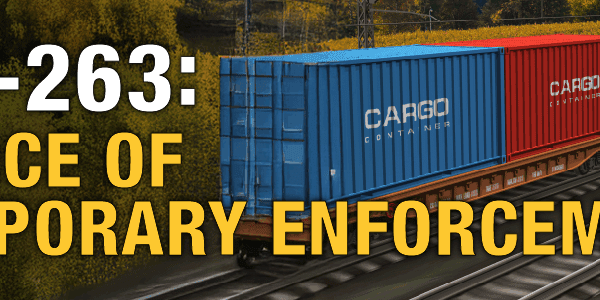
The Occupational Safety and Health Administration (OSHA) has initiated the first major update to its hazard communication standard (Hazcom2012) since the current standard was created to implement the Globally Harmonized System (GHS) in the United States. Hazcom2012, the rule that protects workers by mandating warning labels and Safety Data Sheets (SDSs), became mandatory in 2015, but since then, not many changes have been made. OSHA believed that industry needed a chance to fully implement the new system, which is based on the United Nations document Globally Harmonized System of Classification and Labelling (sometimes called the Purple Book, because of the color of its cover). But as the system has stabilized and industry has adapted, it’s now time to address issues that have occurred since the new system was first rolled out.
The Hazcom2012 standard was originally based on the third revision to the GHS. However, like the UN Recommendations of the Transport of Dangerous Goods, the Purple Book undergoes revision once every two years, so even by the time Hazcom2012 was passed, it was out of sync with the latest version. While this hasn’t created a major obstacle for trade, OSHA has always intended to keep the hazard communication standard updated regularly, just as the Department of Transportation updates the Hazardous Materials Regulations to ensure compliance with international requirements.
Therefore, on February 19, 2021, OSHA issued a Notice of Proposed Rulemaking (NPRM), Docket No. OSHA-2019-0001. They intend to update the hazard communication standard found in the Occupational Safety and Health Act (also called https://www.federalregister.gov/documents/2021/02/16/2020-28987/hazard-communication-standard OSHA) “to conform to the United Nations’ Globally Harmonized System of Classification and Labelling of Chemicals 9GHS) Revision 7 (GHS, Rev. 7), to address issues that arose during the implementation of the 2012 update to the HCS, and provide better alignment with other U.S. agencies and international trading partners, without lowering overall protections of the standard.” There will be a comment period for the NPRM ending on April 19, 2021. Comments can be made to the Federal e-Rulemaking Portal at http://www.regulations.gov (cite Docket No. OSHA-2019-0001).
As the NPRM indicates, the rule changes will be an update to Revision 7 of the Purple Book, which was the current revision when work on this amendment began. Ironically, in the time it has taken for the rule to be created, the UN has moved on to Revision 8 and will introduce Revision 9 by the end of 2021. However, the NPRM will ensure that the system is much closer to the international standard than the current version. It will improve worker safety by an improved classification system and greater clarity in labels and SDSs while giving manufacturers and distributors a more rationalized hazard communication system that more closely matches the international standard. (Remember, however, that there is no great international consistency in which revisions are used by countries that have incorporated the GHS.)
OSHA has identified four main targets for the rulemaking:
- To align as closely as possible with GHS Revision 7.
- To address issues identified during the U.S. implementation of Hazcom2012.
- To identify and address discrepancies and areas of concern with the U.S’s largest trading partner, Canada, and its equivalent system (WHMIS).
- To improve alignment with other U.S. agencies, such as the Department of Transportation and the Environmental Protection Agency.
Significant proposed changes include:
- revised health hazard definitions and updates to hazard classes (mostly editorial).
- clarification of classification scheme for skin/eye damage and irritation.
- the addition of four new physical hazards – pyrophoric/unstable gases; flammable gases; desensitized explosives; and aerosols (non-flammable).
- updates to Appendix C, Label Elements, to reflect new or changed classes and allow combined statements where applicable.
- updates to Appendix D, SDSs, to include a required “particle size” under Section 9, Physical Properties, and to include guidance on interactive effects and non-test data such as “read across” in Section 11, Toxicological Properties. Other clarifications will apply to Sections 2, 3, and 7.
- an improved system for reduced labeling of small packages (current Hazcom2012 was not particularly helpful in this area).
- improved alignment with Department of Transportation regulations regarding labeling of bulk packagings and issues regarding the GHS pictogram.
At the same time, Canada has proposed an amendment to the Hazardous Products Regulations (HPR) that implement WHMIS, the Canadian version of Hazcom2012. These changes will also reflect developments up to the 7th Revision of the GHS, and the two governments have worked to establish as much harmony as possible between the two systems.
The changes should actually benefit U.S. industry. OSHA estimates that the resulting costs would be minimal (mostly revising labels for the next printing and updating SDSs with new information), with substantial savings, for a net cost savings of about $27 million per year. This doesn’t factor in the benefit of increased harmony with trading partners, such as Canada, so the rulemaking should be a popular one.
Do you have any questions about how these changes might affect your operation? Contact ICC Compliance Center here at 888-442-9628 (U.S.) or 888-977-4834 (Canada), and ask for one of our Regulatory Experts. We can help you plan for the changes ahead in hazard communication.
Sources:
OSHA Notice of Proposed Rulemaking, Docket No. OSHA-2019-001
Globally Harmonized System of Labelling and Classification, 7th Revision, 2017
OSHA Hazard Communication Standard, Title 29, Code of Federal Regulations, Section 1910.1200
Stay up to date and sign up for our newsletter!
We have all the products, services and training you need to ensure your staff is properly trained and informed.

|

|

|






 ICC USA
ICC USA ICC Canada
ICC Canada